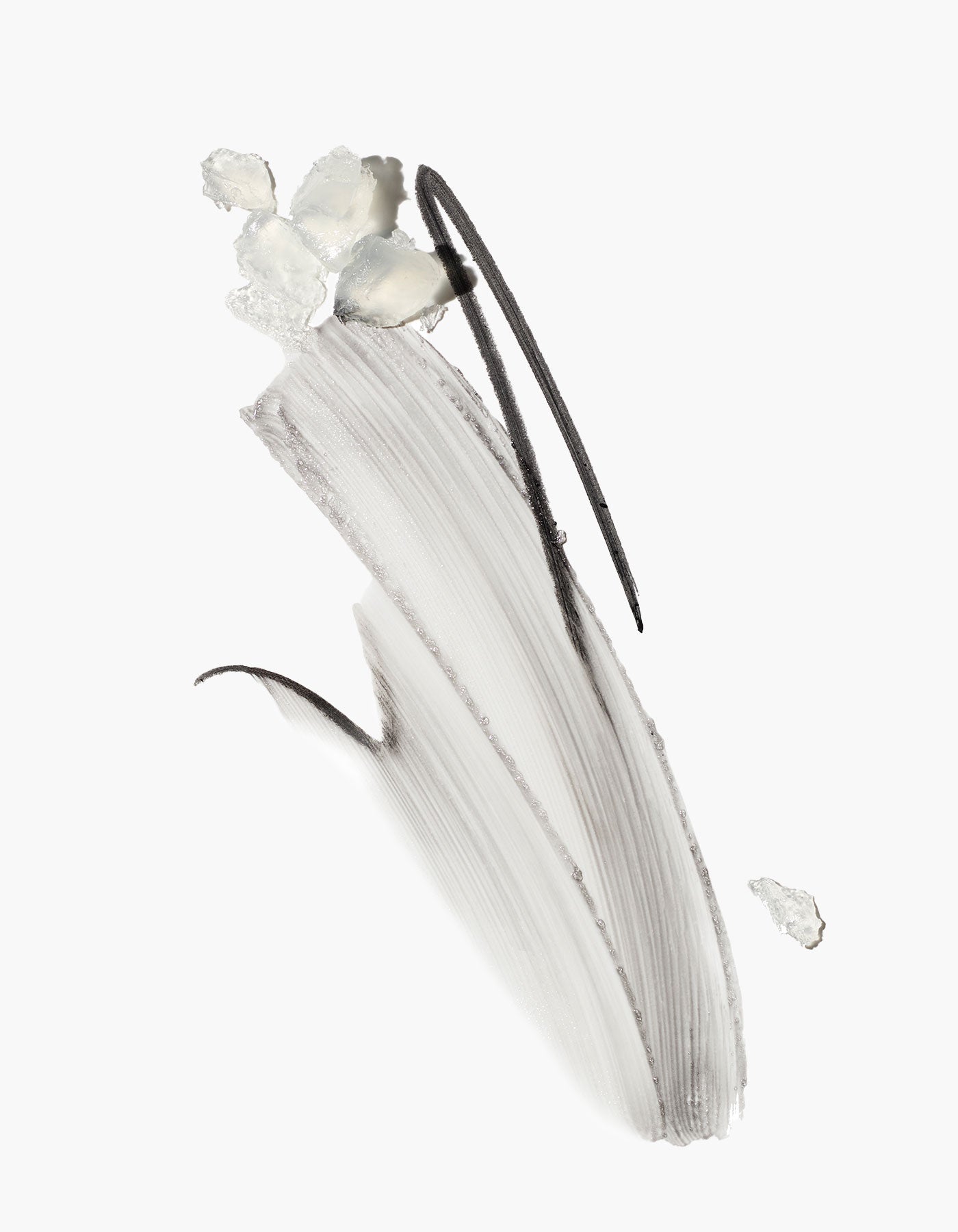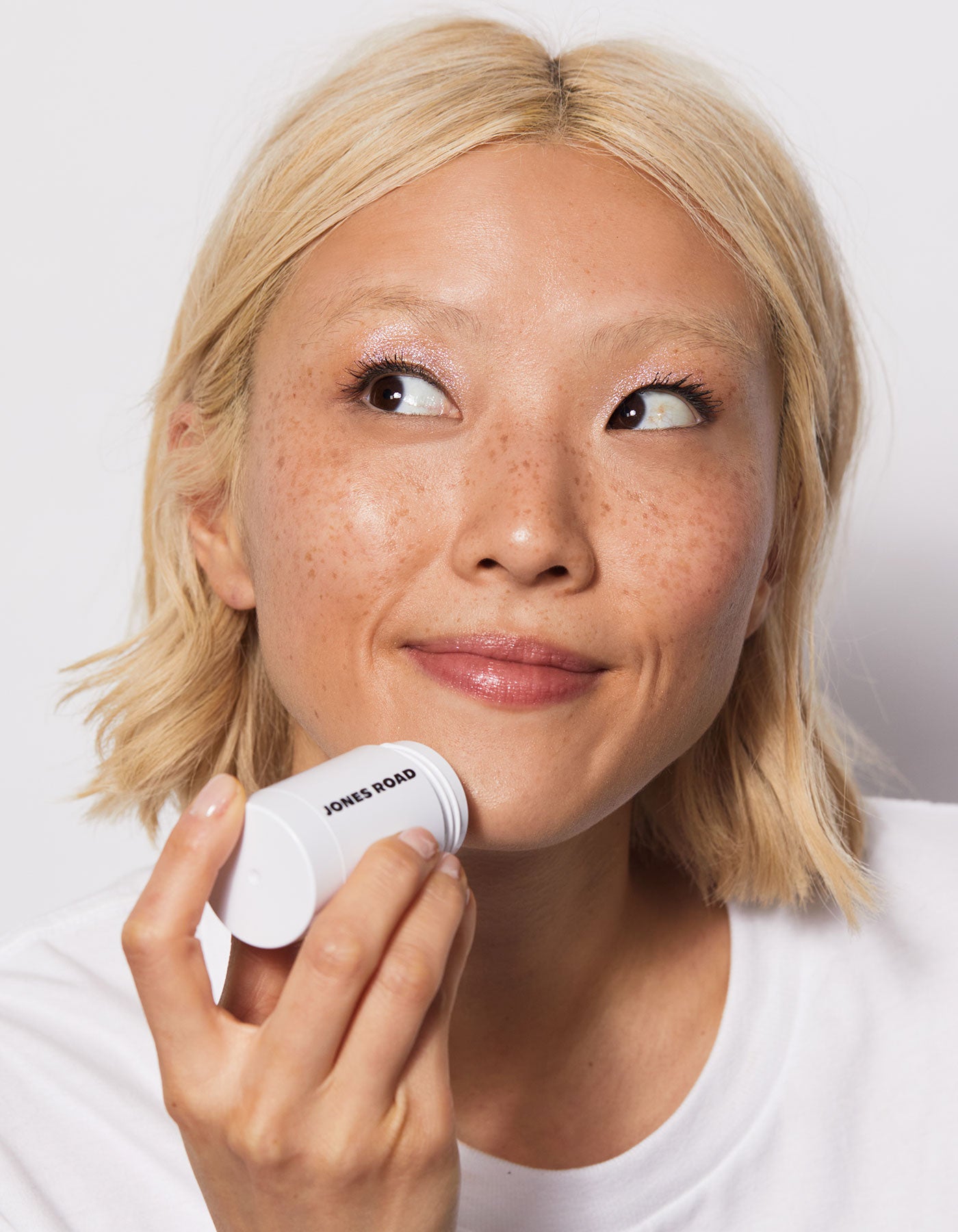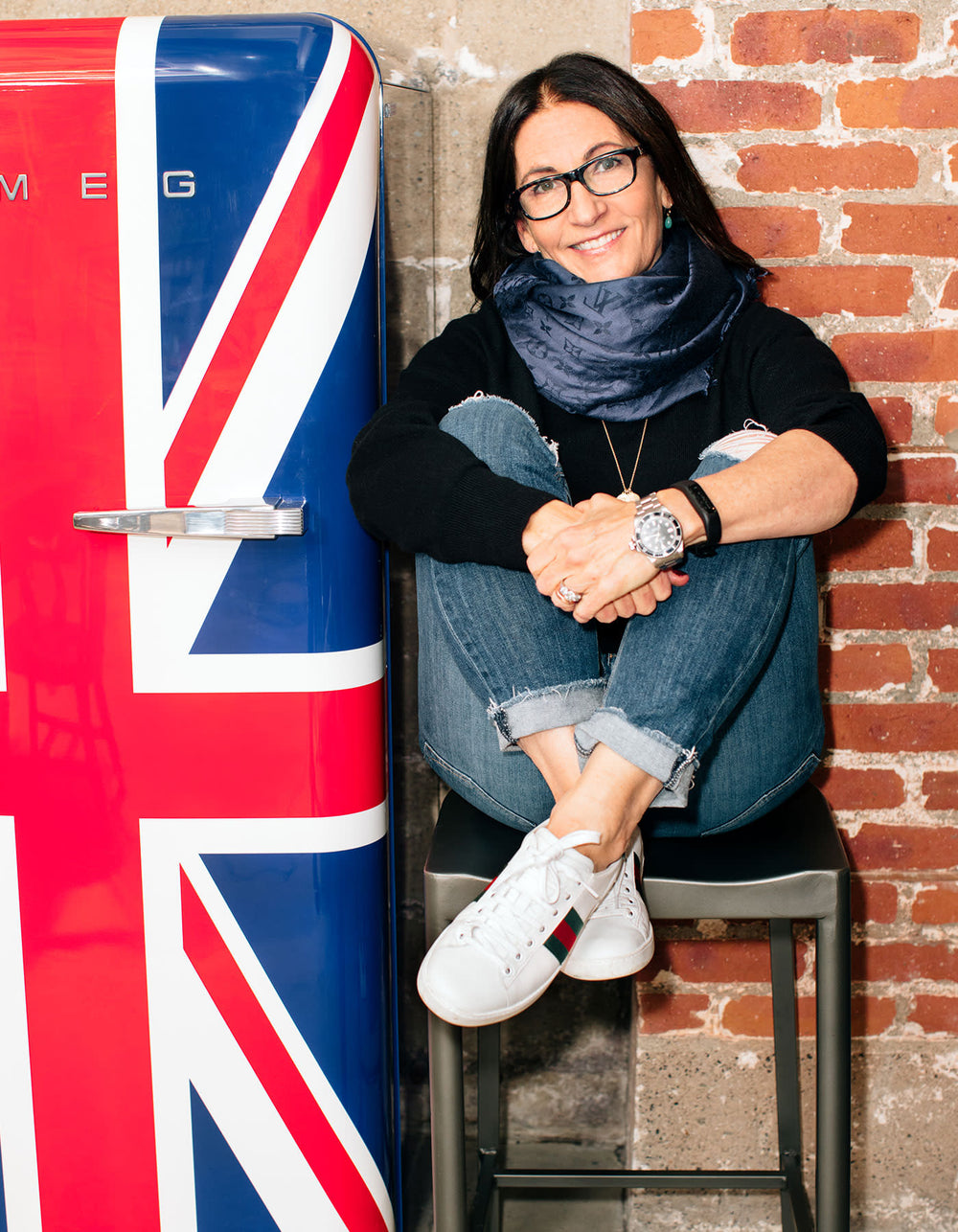Diary / Beauty / Mar 22, 2024
How to Remove Makeup Without Makeup Remover
Written by: Jones Road Beauty
Photography by: Ben Ritter and Jon Patterson

Good news: You don’t always need a product specifically dedicated to removing makeup. Having something like micellar water or makeup-removing wipes on hand can be helpful—especially for completely dissolving a long-lasting look. But if you’re just run out, or never had makeup remover to begin with, all is not lost. Thoroughly yet gently getting rid of the evening’s cat-eye or punchy lip isn’t hopeless.
And, even if you did have makeup remover, you always need to follow up with cleansing to ensure you’ve gotten everything off, and not just moved around product or even pushed, say, your eyeliner deeper into your lashes. (This happens so easily, it doesn’t matter how many years you’ve been putting on and taking off your makeup.) We’ll go over a few other items it’s helpful to keep around and tips for completely taking off the day’s look.
“But, wait, I didn’t wear makeup today—can I skip cleansing?”
Short answer: No.
Even if all you have on your face is the morning’s moisturizer and sunscreen, don’t use this as an excuse to go to bed as is. Nighttime is when your skin can rest and repair—anything less than a clean (and moisturized) face will interfere with your skin’s restoration processes.
Plus, your face is subject to pollution and other things that you’ve encountered just from being out in the world. (And say you’ve been homebound on Zoom calls—camera off, no makeup—clean your skin. Still.)
“But it’s so late. And I’m tired. Can I…?”
We sympathize—we’ve been there when it’s late and it’s tempting to just go to bed with your mascara and coverage still on, but no excuses.
A quick note about skin type
Before you embark on any new routines, especially when it comes to cleansing, it’s important you’re aware of your skin type. (Not a revelation.) If you don’t think about your skin type much, then that likely means you aren’t dealing with any issues (excessive dryness, recurring blemishes), which means you probably have “normal” skin. In that case, you probably don’t have to be too concerned about using special products that soothe sensitivities or address concerns. However, just because you don’t have to be as cautious as those with dry or oily skin, keep your products and movements gentle.
We’re going to talk about oil cleansers a good bit in this article, and while those with oily skin may want to skip over anything that adds oil back in, don’t—this may actually be the perfect product for you.
If you have dry skin, an oil cleanser will also be beneficial. And if you don’t have that, just be extra, extra careful that you’re not using too much of your reliable cleanser. More product does not mean it’s going to get the job done more effectively. This may dry your skin out further.
What you shouldn’t do
Other than skipping the always-crucial cleansing step altogether, there are a couple of things you’ll want to avoid.
Using your go-to cleanser as is
Soap and water may work for your cleanse first thing in the morning, but when you’re dealing with a full face of makeup, this may not cut it. Your standard cleanser, particularly if it’s a foam cleanser and/or water-based, isn’t equipped to handle the most tenacious products. It’s almost inevitable you’ll have to work overtime to take anything off, stripping your skin’s natural oils in the process.
If this is all you have, then of course, still wash your face. Take your time and make sure you’ve lathered up with plenty of water and follow up with even more water to remove the soapy residue.
Reaching for a scrub
Cleansing exfoliators are meant to be used infrequently (this isn’t always the case, of course; your dermatologist knows best). Too much use will probably damage your skin barrier. Cut to sensitive, inflamed skin that gets dry easily and can’t protect itself against everyday stressors.
So while it may seem like the texture of a grainy cleanser will work in your favor to get rid of makeup, the risk outweighs the reward.
Also, scrubbing
Go gentle. Don’t vigorously rub your washcloth back and forth to break up your makeup, regardless of whatever cleanser you’re using. The friction may appear to help, but it can also press the makeup deeper into your skin or spread it around. Not only that, it’s a recipe for irritation.
Use an oil cleanser
Oil cleansers have gained a lot of popularity in recent years, but the idea of cleaning your face with…oil?...may still sound strange. However, it works by gently dissolving the makeup without stripping your skin.
The key is to start with a dry face—no water, not yet. If you’re using The Cleansing Stick, a solid oil cleanser, gently rub it onto your face and then add water to emulsify. Once it looks milky, rinse away with water.
It’s an effective method for even oily skin that’s prone to blemishes. The Cleansing Stick is packed with the non-comedogenic (meaning, it won’t clog pores) sunflower seed oil, which not only nourishes but may help calm irritated skin. You may be surprised to find that your breakouts aren’t as frequent as the oil is doing a better job at completely removing product than your usual cleanser has done. Or, the addition of oil may balance out what is a case of sebum overproduction that is contributing to breakouts.
Of course, it’s great for those with dry skin, too. Perhaps you’re prone to that, or it’s winter, or it’s just a temporary issue for a number of other reasons. Regardless, you’re going to need more hydration and adding an oil—even if you’re taking it off—is an easy way to do that.

Double-cleanse
This method is perfect if you’re washing off heavier makeup that’s formulated to stay put—from a full coverage look with emollients to simply a dramatic application of eyeliner or you’ve taken extra steps to make sure your look is lasting all day.
Double-cleansing is what it sounds like: using two cleansers. Start with an oil cleanser on dry skin, adding water to emulsify, and then rinse—but instead of drying your face, keep it damp and follow up with a water-based cleanser. This second step completely clears any residue that the oil cleanser may have unlocked.
Are you dealing with acne? You might want to try this, no matter which products are left on your face at the end of the day. Adding in a second cleansing step may be what you need to fully rid your complexion of blemish-causing bacteria and pore-clogging products. Try it; just make sure your second cleanser is gentle and you’re not scrubbing.
Focus on the cleansing and rinsing
In other words, spend more time lathering up your cleanser and using water to remove it, and less time wiping off.
Move in gentle circles around your face to help loosen the product so you don’t have to rely on a possibly coarse washcloth to rub it off.
Make sure you have a clean washcloth
We mean 100% clean, not one that you used wet yesterday and it’s dry today. Last night’s bacteria can linger, even if you only used it to wipe down a makeup-free face.
A completely fresh washcloth will also reveal if you’ve sufficiently cleansed and rinsed your makeup off. If there’s a lot of transfer of the day’s look, that means you may have to go back and cleanse some more.
Get a microfiber towel
Note that microfiber isn’t your usual terry cloth towel, which can—if you’re not going slow—be abrasive, particularly those with sensitive skin.
You can use a reusable microfiber washcloth for whichever cleansing method you’re going with: from using soap and water to double-cleansing. (It is especially helpful in removing oil and the residue it loosens.) These towels are soft so there’s no need to scrub or rub. This is a gentle solution for even the most stubborn lip color and complexion correctors.
Other cleanser alternatives
No oil cleanser? Consider these two options: a foam cleanser or cream cleanser.
Foam tends to be stronger so it’s best for those with very oily skin. This is not a great option for dry skin as it can strip.
A cream cleanser is, like it sounds, richer and creamier so this is suitable for drier and more sensitive skin types.
Don’t forget to moisturize
Final thoughts
Micellar water and similar makeup-removing products are beneficial to keep alongside your arsenal of skincare products, but if you find yourself without, that’s okay.
The key is to thoughtfully consider what you already have around and proceed cautiously. The last thing you want to do, especially if it’s already been a long day and a later night, is to rile up your skin because you used too much cleanser and furiously scrubbed away.
As long as you use plenty of water to lather and rinse, go gentle, and take your time, you’ll find that you’re fresh-faced once again.















































 Miracle Balm
Miracle Balm
 Just Enough Tinted Moisturizer
Just Enough Tinted Moisturizer
 What The Foundation
What The Foundation











